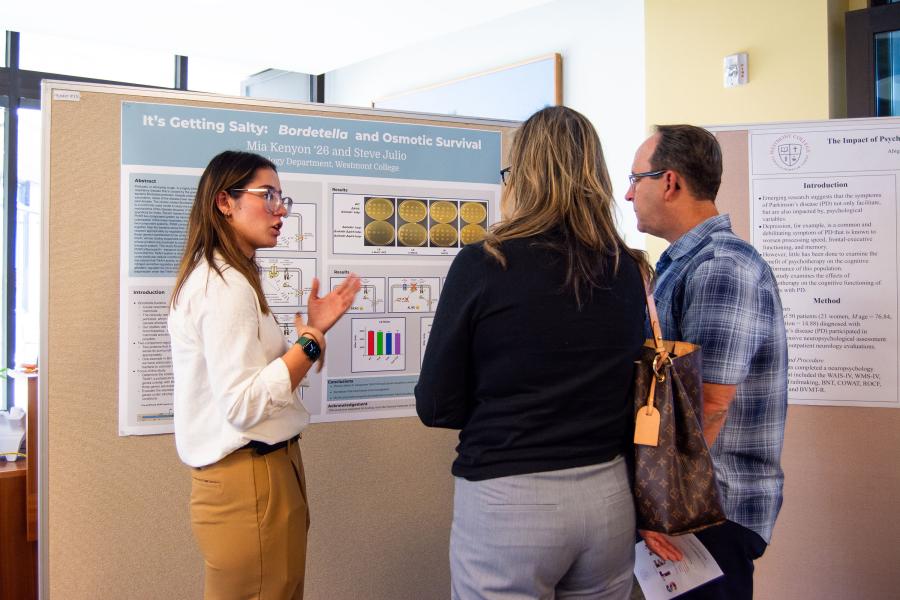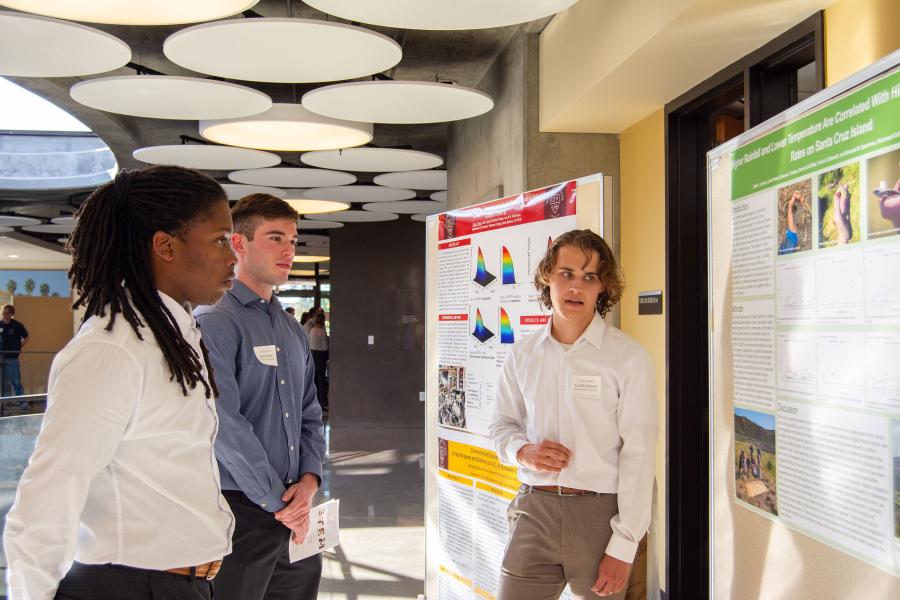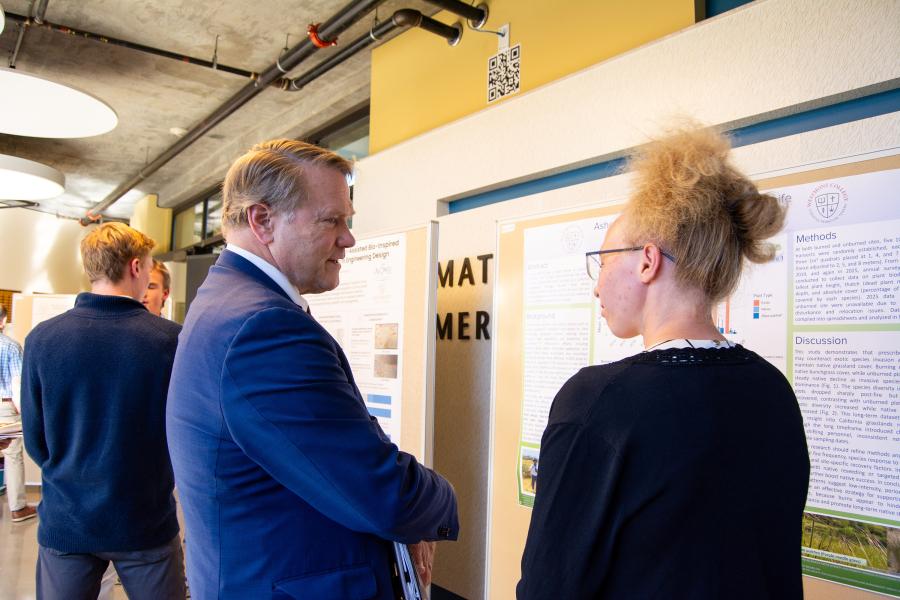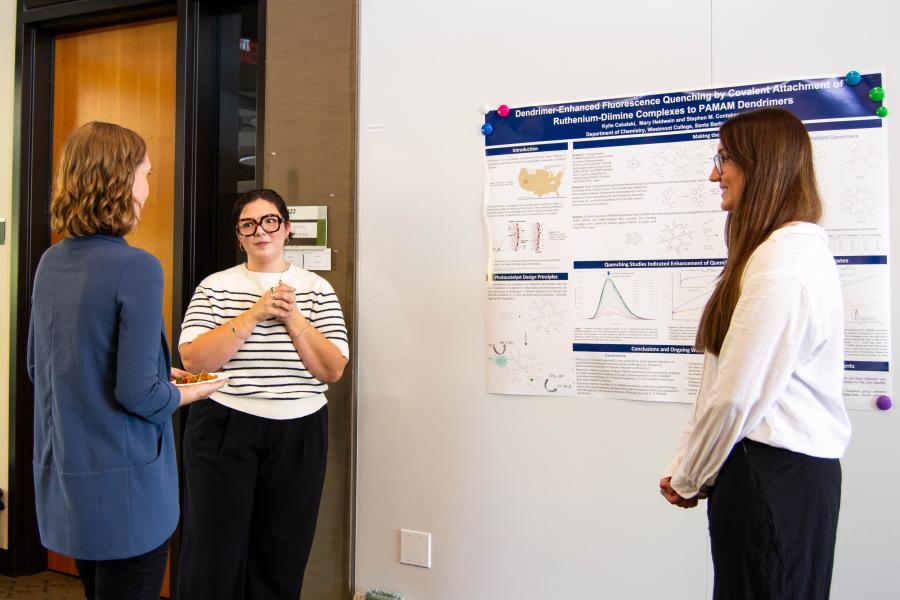Exploration, Innovation, Celebration Students Shine in Season of Research
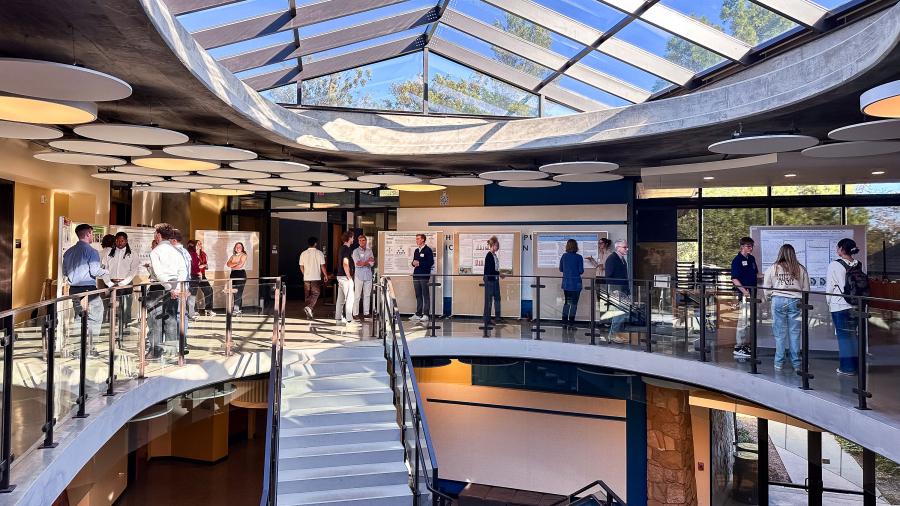
More than 30 student researchers presented 20 different projects at the annual Celebration of Summer Research on Oct. 16 in Winter Hall. Many of the students worked as paid, full-time research assistants, collaborating with professors on cutting-edge projects that sometimes extend into the school year.
Providing opportunities for students to conduct significant research with faculty is a hallmark of the college’s outstanding undergraduate liberal arts education. “Westmont’s classic education features professors and students conducting research together, which provides valuable experiences that can lead to internships, jobs and rewarding careers,” says Provost Kim Denu.
Select titles from the 20 research posters representing the natural and behavioral sciences division include: “Higher Rainfall and Lower Temperature Are Correlated with Higher Reptile Capture Rates on Santa Cruz Island,” “Ashes to Grasses: Fire Supports Native Life,” “High Resolution Spectroscopy of Methane in the Visible Range near 682nm,” “Cryobiopsy in Lung Pathology: If it’s not cancer, what is it?” “She’s a Muon, She’s a Track Star: Tracking Particles through Cloud Chambers” and “Poor man’s altitude: heat exposure may enhance altitude acclimatization.”
Mia Kenyon ’26, who worked with biology professor Steve Julio, discovered two genes with overlapping sequences coding for a potassium transport protein, essential for bacterial virulence. Their research, “The Role of Potassium Transporters in Osmoregulation and Virulence of Bordetella bronchiseptica,” found that mutating these genes significantly reduced bacterial growth.
As part of ongoing research on island dwarfism with biology professor Amanda Sparkman, Caleb Jensen ’27 studied the number of reptiles and island deer mice that were found under large pieces of plywood the researchers leave scattered around the Santa Barbara Channel Islands. “We did find that we had higher capture rates of reptiles in years that we had higher winter rainfall and lower temperature, which could have implications with increasing temperature,” Jensen said.
But if mice are under the boards, does that impact the presence of snakes? “It seems like it would, but we didn't find a relationship between that,” he explained.
Sierra Martin ’26 conducted research about native versus invasive plant species in burned versus unburned areas with biology professor Laura Drake Schultheis. Using data collected from 2014 to 2025, Martin found that native plants were more stable in burned areas, suggesting that prescribed burns could benefit native plants. “In the unburned areas, the native plant species were declining as the exotics continued to take over,” she said. “We found that native plants do better when there's a good reset.”
Kylie Cekalski ‘28 shared findings from her chemistry research project about developing a photocatalyst to remove groundwater contaminants, particularly from jet fuel. “Our design principle was that we would bind a metal complex to a dendrimer, and when light excites it, an electron could transfer through, reducing contaminants in water to a harmless ion,” she said. Future work includes testing different dendrimers and ratios, and addressing how to remove the metal complex and dendrimer post-treatment.
At Westmont, about 1,300 undergraduates enjoy a student-to-faculty ratio of 11 to 1 and an average class size of 18, which allows them to develop close relationships with outstanding faculty who are committed to teaching, scholarship, research, service and involving undergraduates in research. Some students even co-author scholarly papers with their professors.
